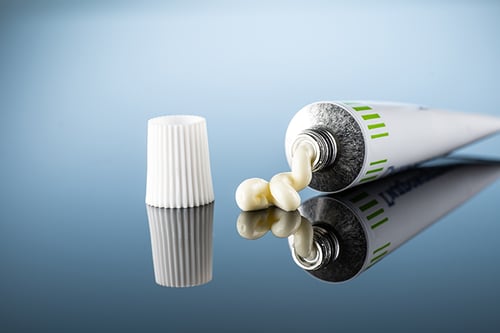Safety Pharmacology
Integrated High-Quality In Vivo Services
For Safety Evaluations

Safety pharmacology evaluations are essential in assessing acute risks and potential undesirable effects of novel pharmaceuticals as part of IND-enabling programs.
Use our deep expertise in safety assessment to your advantage. At Inotiv, our team understands the importance and complexity of the drug development process and will be there to guide you to success by offering an integrated safety pharmacology solution that includes respiratory, central nervous system and cardiovascular as a standalone safety pharmacology service or as part of a full IND/CTA program.

Gain the insight and expertise to help you progress to your next milestone with:
- Fully capable core battery of studies
- Central nervous system (CNS) – functional observational battery of modified Irwin’s cytometric or microscopic analysis
- Telemetered cardiovascular (CV) – blood pressure, heart rate, and electrocardiogram
- Respiratory
- Plethysmography in rodent
- Large animal with CV telemetry (large animal cardiopulmonary telemetry)
- Regulated or non-regulated services
- Expertise in surgical procedures
- Integrated safety pharmacology package that includes respiratory, CNS, and CV studies as:
- Standalone services
- Part of a full IND/CTA program
- Traditional research models available
- Access to industry leading DSI™ hardware and Ponemah software
Meet our Director, Safety Pharmacology
Tyler Speece, B.S., Biology
Bringing over 20 years of Safety Pharmacology Industry Experience

Frequently Asked Safety Pharmacology (SP) Questions:
SP Study Characteristics
WHAT IS A SP STUDY?

Safety Pharmacology studies assess potential effects of a new drug on physiological functions across a dose range that encompasses and surpasses therapeutic levels.
Data collected during preclinical safety pharmacology studies can help calculate a projected safety margin with the goal of protecting clinical trial volunteers from acute, adverse effects of drugs.
HOW DO SP STUDIES DIFFER FROM OTHER PHARMACOLOGY TESTING?
Safety pharmacology and other pharmacology testing share the goal of understanding how a drug affects the body, but they differ in their specific focus and objectives. Here's a breakdown of the key differences:
Safety Pharmacology:

- Focus: Identifies potential off-target effects and safety concerns related to a drug's impact on vital organ systems (cardiovascular, central nervous, respiratory).
- Objectives:
- Detect potential adverse effects that may not be directly related to the drug's intended action.
- Establish safe dose ranges for further testing.
- Inform decisions about proceeding with human trials.
- Study Design:
- Typically uses in vivo animal models.
- Focuses on a limited range of core physiological functions.
- Employs a wider range of doses including those exceeding therapeutic levels.
- Data Analysis:
- Assesses dose-response relationships for observed effects.
- Evaluates the onset, duration, and reversibility of adverse effects.
Other Pharmacology Testing:
- Can encompass a wider range of objectives:
- Understanding a drug's mechanism of action at the molecular level.
- Assessing a drug's efficacy (ability to produce the desired therapeutic effect).
- Determining a drug's ADME profile (absorption, distribution, metabolism, excretion).
- Study Design:
- Can utilize both in vitro and in vivo models.
- May be more specific to the drug's target organ or system.
- Doses may be more focused on the therapeutic range.
- Data Analysis:
- Varies depending on the specific objective of the study.
- May involve detailed analysis of molecular interactions, physiological responses, or pharmacokinetic parameters.
Safety pharmacology is a precautionary screening to identify potential red flags before human testing.
Other pharmacology testing focuses on understanding how the drug works and if it achieves its intended effect.
WHAT TIME SAVING MEASURES CAN BE INCORPORATED INTO SP STUDIES?
Here are some timesaving measures you can incorporate into safety pharmacology (SP) studies:
Pre-study Planning:

- Strategic prioritization: Focus on core battery studies most relevant to your drug's mechanism of action (MOA) and potential liabilities. Utilize scientific justification to exclude unnecessary studies based on existing knowledge or the drug's class.
- In silico modeling: Leverage computer simulations to predict potential effects and inform study design. This can help identify areas requiring in vivo testing and optimize the scope of SP studies.
- Collaboration with regulators: Early engagement with regulatory bodies allows you to discuss study design and potential waivers. This can help avoid delays due to unmet expectations.
Study Design and Execution:
- Combined protocols: Whenever feasible, design studies to assess multiple organ systems concurrently. This reduces the number of animals required and streamlines the experimental process.
- Multiplexing assays: Combine multiple tests into a single assay to reduce sample volume and analysis time. This can be particularly efficient for studies requiring analysis of multiple parameters in the same sample.
- Automated data acquisition and analysis: Utilize software to automate data collection and analysis. This minimizes human error and expedites data processing.
- Centralized laboratory testing: Consider outsourcing SP studies to contract research organizations (CROs) link Inotiv, with expertise and established protocols. This can save time on setting up in-house experiments and utilizes existing resources effectively.
Data Management and Reporting:
- Standardized reporting templates: Following standardized reporting formats simplifies data presentation and facilitates regulatory review, potentially reducing approval times.
- Efficient data management: Utilizing electronic data capture (EDC) systems ensures data integrity and facilitates efficient data sharing and analysis within your study team. Inotiv uses industry leading DSI™ hardware and Ponemah software.
Additional Considerations:
- Balancing speed with quality: While time-saving measures are valuable, scientific rigor and data quality must be maintained. Ensure all implemented measures adhere to regulatory guidelines and best practices.
- Adapting to specific needs: The most appropriate time-saving measures will vary depending on your drug candidate and study design. Carefully evaluate the options and choose those that best suit your specific needs. Inotiv experts can help you develop a rugged and concise SP strategy to move your compound forward.
By strategically incorporating these time-saving measures, you can potentially:
- Reduce the overall duration of SP studies.
- Optimize resource allocation within your drug development program.
- Bring your new drug candidate to patients faster.
CAN OTHER STUDIES BE RUN IN PARALLEL WITH SP STUDIES?
Here are some additional studies that can be run in parallel with safety pharmacology (SP) studies to optimize the drug development timeline:
Preclinical Studies:

- ADME Studies (Absorption, Distribution, Metabolism, and Excretion): These studies investigate how the drug enters the body, travels throughout the system, is broken down, and eliminated. Understanding the ADME profile can inform safety pharmacology studies by helping to predict potential systemic exposure and off-target effects.
- In Vitro Pharmacology Studies: These lab-based studies examine how the drug interacts with its target molecule(s) or relevant cellular pathways. Running them concurrently with SP studies can provide insights into potential off-target effects that SP studies may then explore further in a whole-organism context.
- Early In Vivo Efficacy Studies: While safety is a top priority, conducting initial animal studies to assess if the drug has the desired therapeutic effect can be valuable alongside SP studies. This can provide early evidence for efficacy and guide further development.
Pharmacokinetic/Pharmacodynamic Studies (PK/PD):
These studies explore the relationship between a drug's concentration in the body and its pharmacological effects. Running PK/PD studies in parallel with SP studies can be beneficial because:
- They can help establish the therapeutic dose range, informing SP studies about relevant exposure levels.
- They can identify potential dose-related adverse effects that SP studies may need to investigate further.
Additional Considerations:
- Regulatory Requirements: Always consult with regulatory bodies to ensure the studies you plan to run in parallel meet their requirements and expectations.
- Scientific Justification: The decision to run studies concurrently should be based on a sound scientific rationale for your specific drug candidate.
- Resource Constraints: Parallel studies require careful coordination and resource allocation. Ensure sufficient resources are available to maintain data quality and study integrity.
By strategically running these studies in parallel with safety pharmacology studies, you can potentially:
- Shorten the overall drug development timeline.
- Gain a more comprehensive understanding of the drug's safety and efficacy profile earlier in development.
- Make informed decisions about proceeding with further development more efficiently.
WHAT IS THE GENERAL TIME FRAME NEEDED TO COMPLETE SP STUDIES?
The specific timeframe for safety pharmacology studies can vary depending on several factors, but typically falls within a range of 2 to 6 months.
Here's a breakdown of why there's variability:

- Number of studies: The "core battery" of safety pharmacology studies typically includes assessments of the cardiovascular, central nervous, and respiratory systems. Additional studies may be required based on the drug's properties.
- Study complexity: The complexity of each study design, like the number of dose groups and required analyses, can impact timelines.
- Animal availability: Depending on the species used and study requirements, there may be waiting times to acquire animals.
- Laboratory workload: Contract research organizations (CROs) like Inotiv, performing the studies may have existing workloads that impact scheduling.
Here are some ways to potentially expedite safety pharmacology studies:
- Early planning and communication: Discuss study design and potential waivers with regulatory bodies early in the process.
- Streamlined protocols: Utilize well-established protocols and combine assessments when feasible.
- Efficient execution: Utilize automation, centralized testing, and efficient data management.
Remember: While speed is important, scientific rigor and data quality are paramount. It's important to consult with a study team and regulatory bodies to get a more accurate timeframe for your specific needs.
Regulation and Guidance Considerations
WHAT GUIDELINES APPLY TO SP STUDIES?
The primary guidelines for safety pharmacology studies can be found in the harmonized guidelines developed by the International Council for Harmonisation of Technical Requirements for Pharmaceuticals for Human Use (ICH).

ICH M3(R2), released in 1997, is a Pharm/Tox for nonclinical multidisciplinary guidance document, that tells us a lot about both clinical and nonclinical studies. Per this document, is it recommended that safety pharmacology studies should generally be conducted before human exposure.
ICH S6, also released in 1997, provides guidance on the preclinical safety evaluation of biotechnology-derived pharmaceuticals. Examples would include, but aren’t limited to, oligonucleotides, vaccines and monoclonal antibodies. Drugs like these may have unique safety considerations compared to small molecule drugs.
ICH S7A, released in 2001, outlines the core battery studies, discussed earlier. This document was developed with the primary intent of protecting clinical trial participants from potential adverse effects of new compounds. The guidelines outline details that assist Inotiv in avoiding unnecessary use of animals and resources.
ICH S7B, released in 2005, recommends a general nonclinical testing strategy for determining the likelihood of a non-cardiovascular pharmaceutical delaying ventricular repolarization, or prolonging QT. The in vivo evaluation described in S7B is commonly known as the QT Core Assay. S7B also provides detailed guidelines for the hERG assay. The QTc core assay and hERG studies are complementary and assist in the estimation of human cardiovascular risk.
ICH S9, released in 2010, provides guidance on the nonclinical evaluation of anticancer pharmaceuticals meant to treat cancer indications.
ICH E14 and S7B, released in 2022, establishes a connection between clinical evaluation (ICH E14) and preclinical assessment (ICH S7B) in the context of cardiac safety during drug development. This Questions and Answers document introduces the concept of a “double negative” nonclinical scenario (negative hERG assay and negative in vivo QTc Study) to demonstrate that a drug does not produce a clinically relevant QT liability. A “double negative” nonclinical data package, along with negative Phase 1 clinical QTc data, may be sufficient to substitute for a clinical TQT study in some cases (sections 5.1 and 6.1) The Q&As define particular statistical evaluations that can be used to demonstrate both the lab's historical assay sensitivity and the study-specific sensitivity regarding QTc.
WHEN SHOULD I CONDUCT MY SP STUDY?
The ideal time to conduct your safety pharmacology (SP) study is before the first administration of the drug to humans. Here's why:

- Early assessment of safety risks: SP studies help identify potential off-target effects and safety concerns related to the drug's impact on vital organ systems. Conducting them early allows for informed decisions about proceeding with human trials and helps mitigate potential risks to human subjects.
- Data for dose selection in human trials: SP studies establish a basis for safe dose selection in the first human trials (Phase I). Understanding the drug's effects on key physiological systems helps determine starting doses and avoid potential adverse effects in human volunteers.
- Regulatory requirements: Most regulatory agencies, like the FDA and EMA, require safety pharmacology data to be submitted before allowing human trials to proceed. Having this data available facilitates regulatory approval for human studies.
Here are some additional points to consider:
- Integration with other studies: SP studies can be run in parallel with other preclinical studies like ADME or early efficacy studies to optimize the drug development timeline. However, the SP data should still be available before the first human dose.
- Scientific justification for timing: If, in exceptional circumstances, you propose conducting SP studies after initial human trials (Phase I), you'll need a strong scientific justification to explain your rationale to regulatory bodies.
Conducting your safety pharmacology study before the first administration in humans is the recommended and standard approach for maximizing safety and meeting regulatory requirements.
HOW DO I SELECT AN ANIMAL MODEL FOR SP STUDIES?
Selecting the appropriate animal model for safety pharmacology (SP) studies is crucial for generating reliable and predictive data and several factors should be considered.
Key Considerations:

- Relevance to Human Physiology:
- Choose species with physiological systems that closely resemble humans for relevant endpoints.
- Consider the target organ system for the drug and select a species with a well-characterized system.
- Ethical Considerations:
- Adhere to all relevant animal welfare regulations and guidelines.
- Minimize animal numbers and suffering while maximizing data quality.
- Practical Considerations:
- Availability and cost of the animal species.
- Expertise and resources within your organization.
- Historical data on the species for similar studies.
- Regulatory Requirements:
- Adhere to regulatory guidelines for animal models in SP studies.
- Consider the specific requirements of target regulatory agencies (e.g., FDA, EMA).
Commonly Used Animal Models:
- Rodents (Rats and Mice):
- Widely used due to their low cost, ease of handling, and extensive physiological data.
- Suitable for most SP studies, especially for initial screening.
- Limitations: Some physiological differences compared to humans.
- Dogs:
- Large animals with physiological systems closer to humans.
- Used for cardiovascular and respiratory studies.
- Higher cost and specialized handling requirements.
- Non-Human Primates:
- Closest physiological similarity to humans.
- Used for complex studies requiring high predictive value.
- Ethical and regulatory challenges, high cost, and limited availability.
Specific Considerations:
- Drug Target and Mechanism of Action: If the drug targets a specific organ system, consider a species with a well-characterized system.
- Route of Administration: Select a species suitable for the intended route of administration (e.g., oral, intravenous, inhalation).
- Study Design: The complexity of the study and the number of endpoints will influence the choice of animal model.
- Historical Data: If available, consider using the same species as in previous studies for consistency.
Additional Tips:
- Justify your choice: Clearly document the rationale for selecting the animal model in your study protocol.
- Consider multiple species: In some cases, using multiple species can provide a more comprehensive safety assessment.
- Consult with experts: Seek advice from experienced scientists and toxicologists in selecting the appropriate animal model.
By carefully considering these factors, you can select the most appropriate animal model for your SP studies and generate high-quality data to support drug development.
UNDER WHAT CONDITIONS ARE SP STUDIES NOT NEEDED?
Safety pharmacology (SP) studies are generally not required under a few conditions, but it's important to note that these are exceptions and careful justification is needed. Here are some scenarios where SP studies might be waived or minimized:
Locally Acting Drugs with Low Systemic Exposure:

- Route of Administration: If the drug is applied topically (e.g., creams, ointments, drops) or through a localized route (e.g., inhalation for lung-specific effects), and is unlikely to enter the bloodstream in significant amounts, SP studies might be waived. The focus here is on minimal systemic exposure.
- Well-Characterized Mechanism of Action: If the drug's mechanism of action is well understood and unlikely to directly affect vital organ systems (heart, lungs, central nervous system), SP studies might not be necessary.
However, justification is crucial. You'll need to provide data demonstrating low systemic exposure, potentially through studies like:
-
ADME Studies: These studies assess how the drug is absorbed, distributed, metabolized, and excreted. They can help confirm minimal systemic exposure.
Certain Classes of Drugs with Established Safety Profiles:
For certain well-established drug classes with a long history of safe use, and for drugs with a similar mechanism of action to these established drugs, SP studies might be partially waived or require a reduced battery of tests.
Here too, justification is needed. You'll need to demonstrate the drug belongs to a class with a well-established safety profile and provide relevant scientific references.
Early-Stage Exploratory Drugs:
In the very early stages of drug discovery, for exploratory compounds with limited information, basic SP studies might be sufficient. These studies might focus on a single organ system most relevant to the drug's target or potential off-target effects.
Even here, justification is important. You'll need to explain the rationale for the limited scope of SP studies and outline plans for more comprehensive studies as development progresses.
Remember:
- The decision to waive or minimize SP studies should involve a scientific justification and be made in consultation with regulatory bodies.
- Regulatory requirements for SP studies can vary depending on the specific drug, route of administration, and intended use.
- Always consult with regulatory agencies early in the development process to understand their specific requirements.
SP STUDIES APPLY TO WHICH INDUSTRIES?
Safety pharmacology (SP) studies are primarily applicable to the pharmaceutical industry, specifically for companies developing new drugs. These studies are a crucial step in the drug development process to assess a drug's potential impact on vital organ systems before administering it to humans. However, the importance of understanding a drug's safety profile extends beyond pharmaceuticals.
Here are some other industries that might benefit from SP studies:

- Biotechnology Industry: Biotech companies developing new therapeutic agents like gene therapies or protein-based drugs can leverage SP studies to assess potential safety risks.
- Medical Device Industry: While not as common for traditional medical devices, SP studies could be relevant for implantable devices or devices with potential systemic effects.
- Cosmetics Industry: For certain cosmetic products, particularly those with systemic absorption or targeting specific physiological functions, SP studies might be required in some regulatory settings.
It's important to note that the extent to which SP studies are required in these non-pharmaceutical industries will depend on the specific regulatory landscape and the nature of the product being developed. Consulting with regulatory bodies is crucial to determine if SP studies are necessary.
Articles/Publications
- Enhanced Detection Sensitivity in Nonclinical Cardiovascular Telemetry Studies: Impact of a Characterized Facility
- Evaluation of Implantable Cardiopulmonary Telemetry with Non-Restrained Cynomolgus Monkeys in the Latin Square Design: An Alternative Surgical Approach
- Applying ICH E14/S7B: The Cardiovascular Effects of Moxifloxacin in Conscious, Telemetered Cynomolgus Monkeys
- Speece, Ty; Horton, Noel; Rivers, Jacob; Downing, Phil; Baublits, Joel. “Applying ICHE14/S7B: The Cardiovascular Effects of Moxifloxacin in Conscious, Telemetered Cynomolgus Monkeys”. International Journal of Toxicology 2024 43(1) 95.
- Cardiovascular Effects of Dofetilide in Conscious Telemetered Dog.
- Speece, Ty; Hawkins, Zac; Alexander, Andrew; Baublits, Joel. “Cardiovascular Effects of Dofetilide in Conscious, Telemeterized Beagle Dogs”. Journal of Pharmacological and Toxicological Methods 117 (2022) 23.
- Concentration-QTc Analysis Following Dofetilide Administration in Telemetered Beagle Dogs
- Speece, Ty; Hawkins, Zac; Alexander, Andrew; Baublits, Joel. “Concentration-QTc Analysis Following Dofetilide Administration in Telemetered Beagle Dogs”. Journal of Pharmacological and Toxicological Methods 117 (2022) 23.


